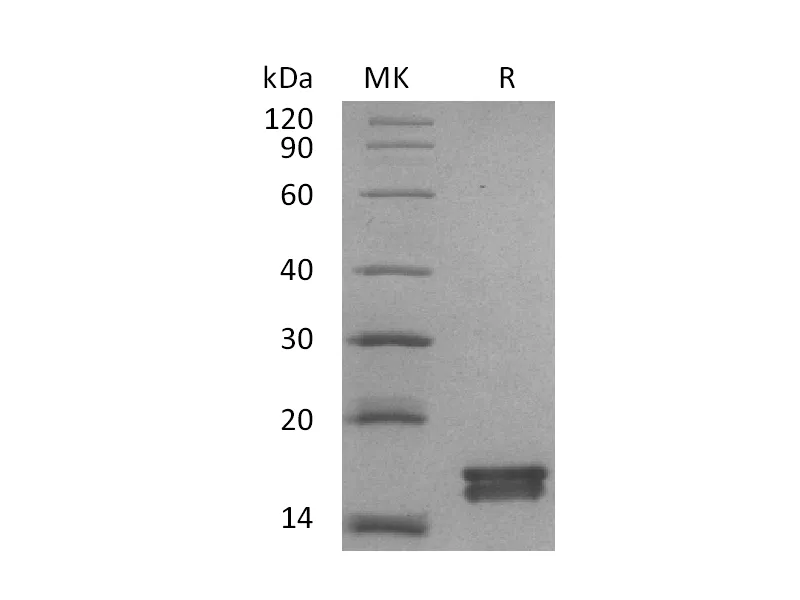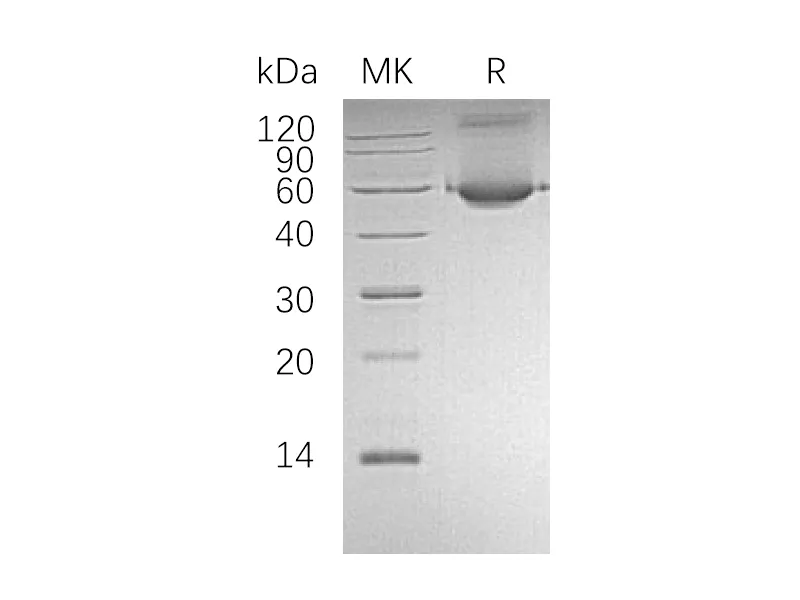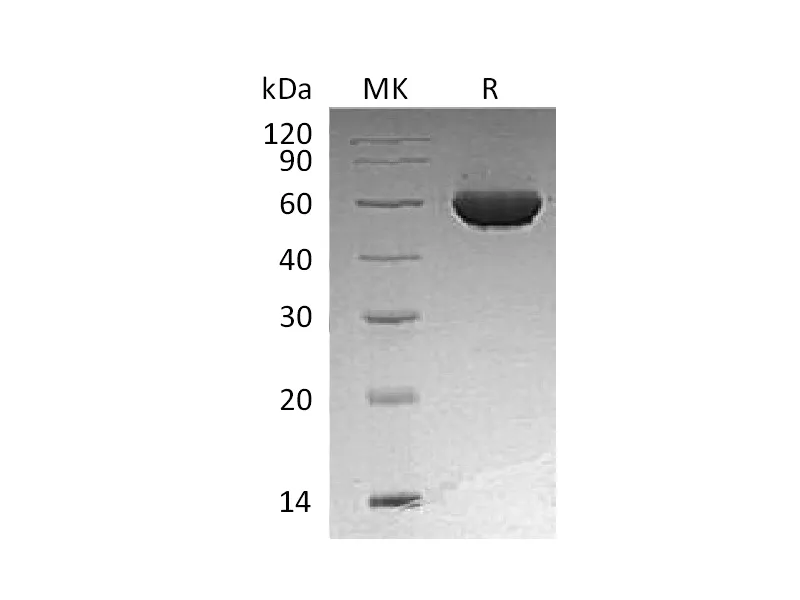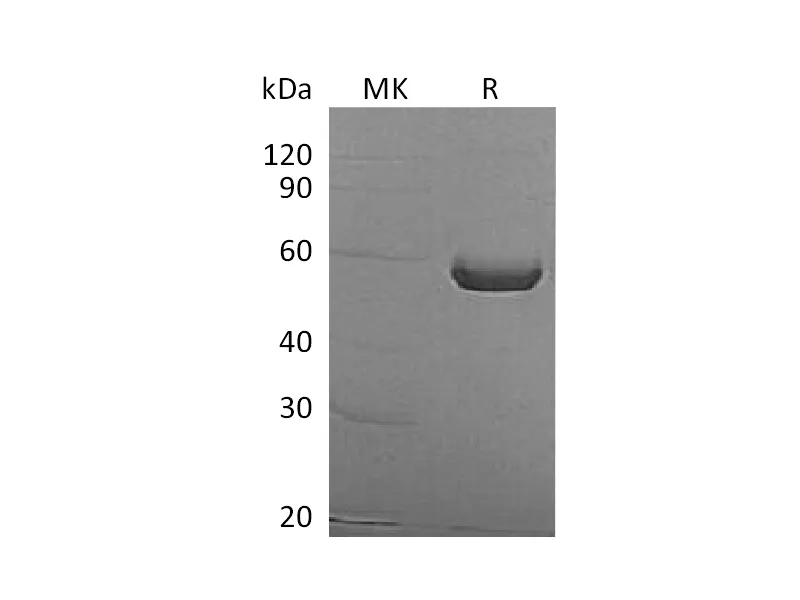Alternative Names
Interleukin-5 receptor subunit alpha; IL-5 receptor subunit alpha; IL-5R subunit alpha; IL-5R-alpha; IL-5RA; CD125; Il5ra; Il5r
Background
Interleukin 5 Receptor alpha (IL-5 Rα), also known as CD125, is a hematopoietin receptor that plays a dominant role in eosinophil biology. Mature mouse IL-5 Rα consists of a 322 amino acid (aa) extracellular domain (ECD) with a WSxWS motif and a four cysteine motif, a 22 aa transmembrane segment, and a 54 aa cytoplasmic domain. The high affinity receptor for IL-5 is a complex that consists of the ligand binding IL-5 Rα and the transmembrane common β chain (βc/CD131) which is shared with the receptor complexes for IL-3 and GM-CSF. IL-5 Rα binds IL-5 at low affinity and then associates with preformed βc oligomers to form the signaling-competent receptor complex. IL-5 stimulation of CD34+ hematopoietic progenitor cells induces the up-regulation of transmembrane IL-5 Rα followed by eosinophilic differentiation and activation. IL-5 Rα also promotes the differentiation of basophils and B cells. Exposure of mature eosinophils to IL-5 attenuates their IL-5 responsiveness by inducing the down-regulation of surface IL-5 Rα and increased production of soluble IL-5 Rα.
Note
For Research Use Only , Not for Diagnostic Use.




